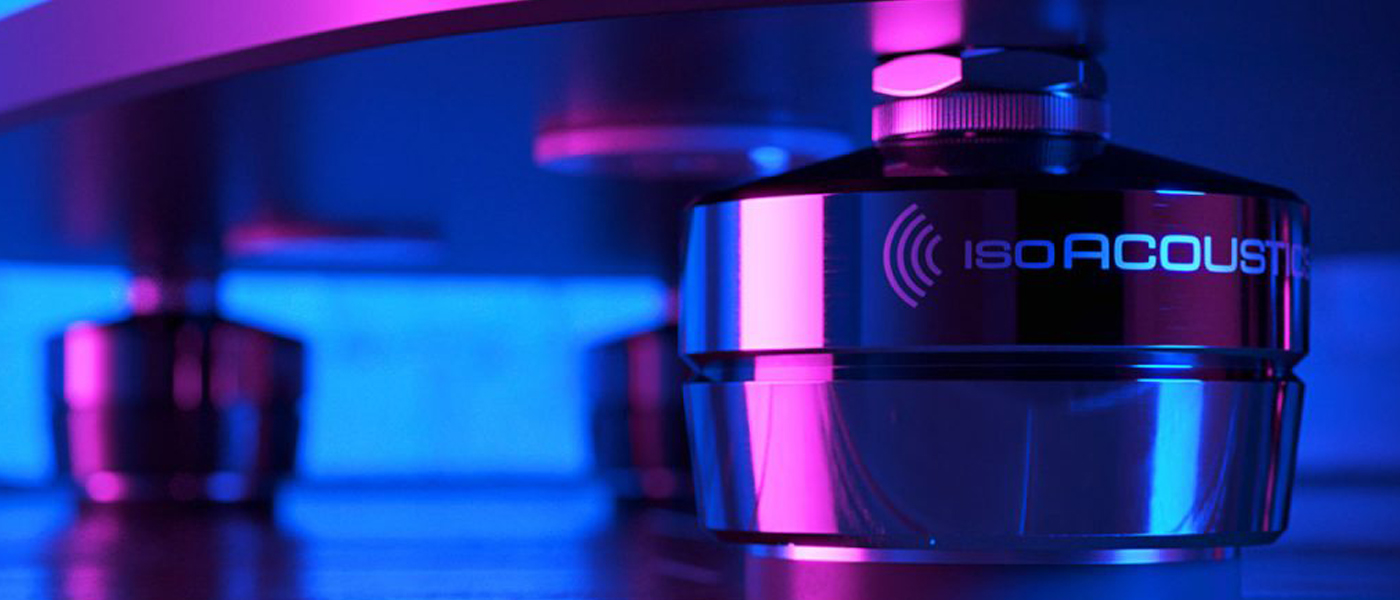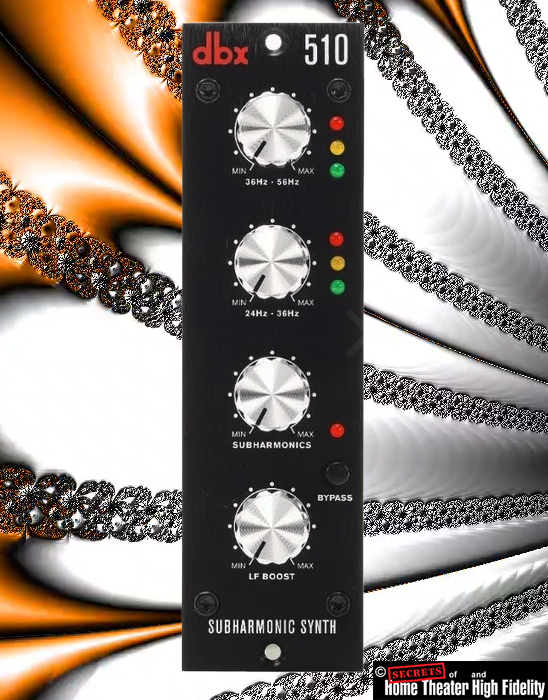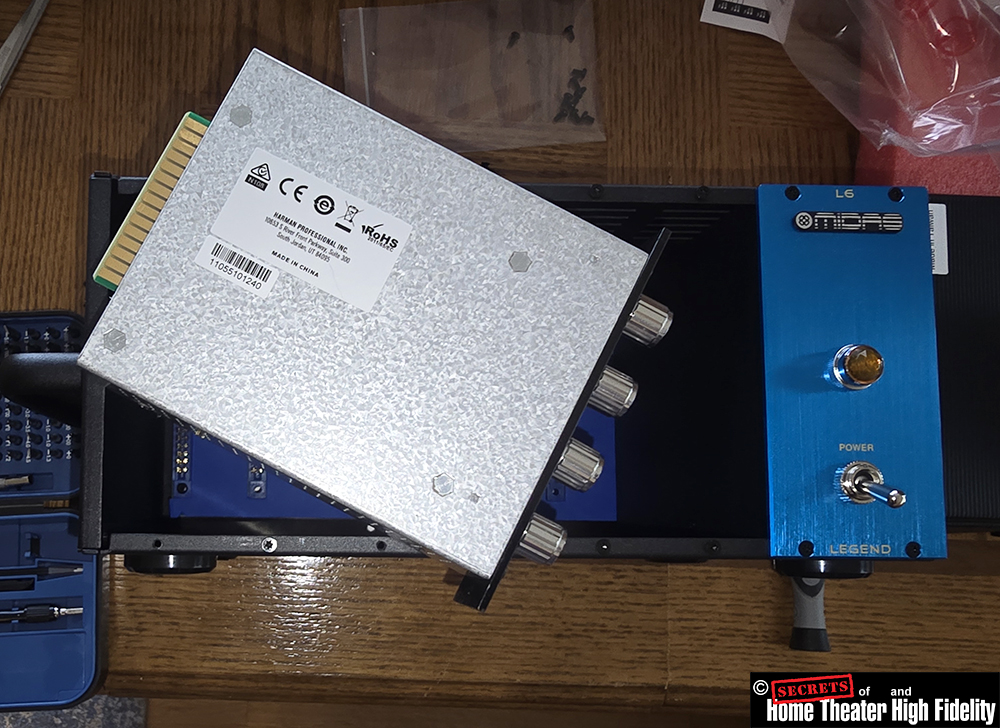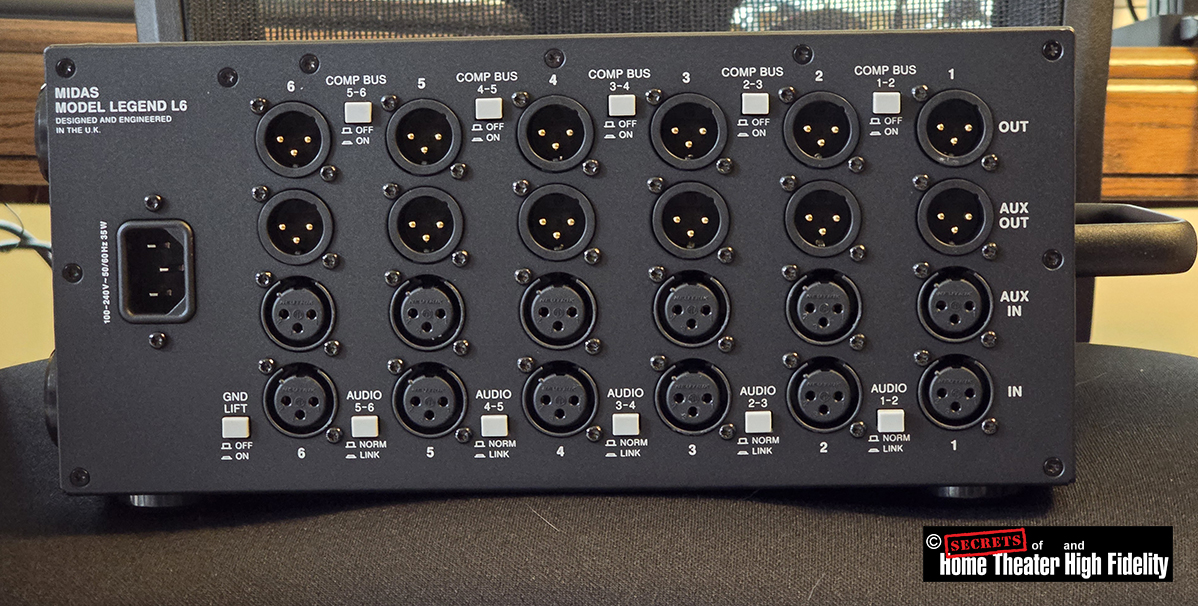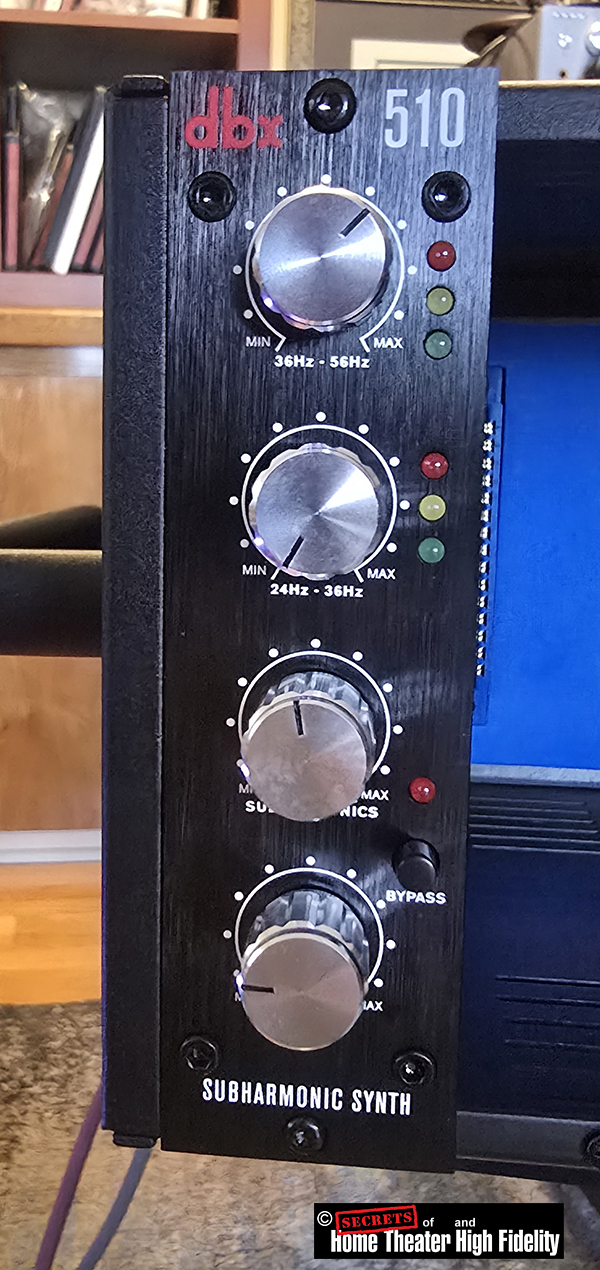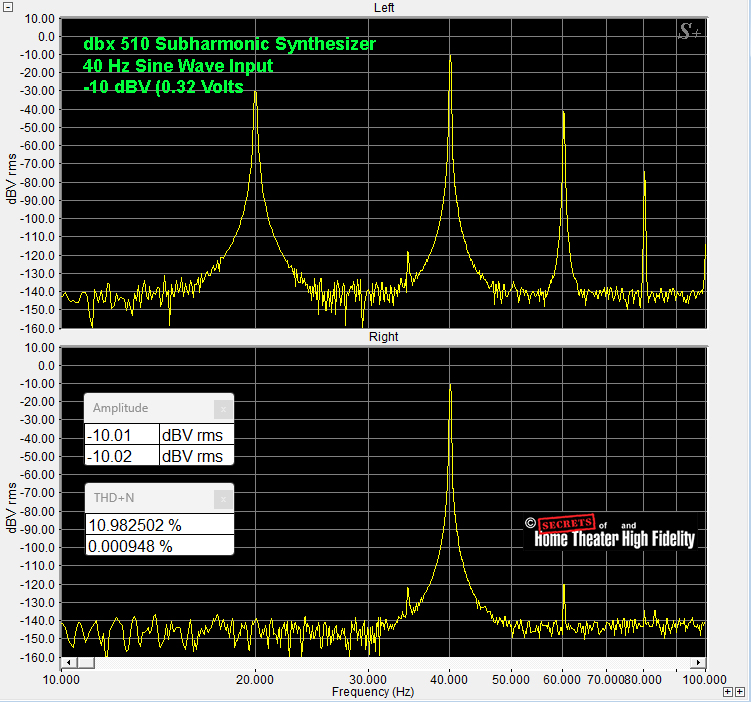For those of us who have big subwoofers and watch action movies, we love the room-shaking sound of spacecraft engines and explosions. However, we would like it even more if the sounds included frequencies in the 15 Hz to 20 Hz region. Most movies don’t have this because most people don’t have subwoofers that could handle them, and studios don’t particularly want consumers to blow up their small to midsized subs.
Since I have big subwoofers (SVS PB16-Ultra, SVS PB17-Ultra R|Evolution, and MartinLogan Balanced Force 212), I decided to do something about this.
A quick search on the web yielded one clear choice, the dbx 510 Subharmonic Synthesizer. It is available at Sweetwater for $210, but is also available at other on-line stores too. It generates a subharmonic signal at half the input signal frequency. So, if the input signal is 40 Hz, it will generate a 20 Hz subharmonic.
The dbx 510 is designed to fit into recording studios series 500 chassis. I mounted it inside the chassis as shown below. The dbx 510 has a protruding connector that slides into one of the six sockets that are available in the MIDAS Legend L6 6-space 500 Series Chassis ($199 at Sweetwater) that I selected. Then two screws are used to secure the module in the chassis. You can order extra blank plates to cover the open slots. This will keep dust out of the chassis. Later on, if you order a second dbx 510 for a second subwoofer, you just remove one of the blank plates and mount it in that open socket. I plan to order a different module to improve center channel human voice intelligibility, and I will talk about how it worked in another article. The module will fit into the chassis I already have.
Secrets Sponsor
The rear panel of the chassis is shown in the figure below. The dbx 510 is connected to the vertical XLR plugs and sockets on the far right. The chassis has its own power supply, so the total price for this accessory is a little over $400. The grounded AC 120 Volt socket is shown on the left hand side.
In the photo below, you can see the settings that are available. The top dial lets you add subharmonics from input signals in the 36 Hz – 50 Hz range, and the second dial adds subharmonics from signals in the 24 Hz to 36 Hz range. The third dial controls the amount of subharmonics, and the fourth dial adds overall bass increase (LF Boost). I chose the dial settings in the photo.
Using this setup requires that the subwoofer output from a surround sound processor be routed to the IN socket on the dbx 510, and the OUT plug from the db 510 routed to the subwoofer, using XLR balanced cables. So, the dbx 510 is in between the surround sound processor and the subwoofer. The dbx 510 module is one channel, so if you have two (or more) subs, you would need a second (or third) dbx 510 for additional subwoofers, assuming you wanted to have the effect occur in all your subs. Using the AUX out, you could add a second sub, but if you have the two subwoofers room-corrected separately, this would not be the choice to make.
In testing the dbx 510, I found that subharmonics are indeed generated, but there are 3rd-ordered harmonics of the subharmonics and 2nd-ordered harmonics of the input signal, as shown below in a spectrum from a 40 Hz input signal. However, this just adds to the deep bass effect. The dbx 510 will deliver bass down in the 12 Hz range, so you need to be careful how you adjust the settings. Turn the third dial from the top down all the way when you are testing the effect. Then slowly turn it up while playing a movie with intense bass, like Promethius, which is what I used for setting it all up. If you adjust dials 1 and 2 from the top, do this slowly as some 12 Hz – 15 Hz subharmonics will start showing up in varying degrees. When listening to music, press the Bypass button, shown in the photo above at the top right of dial number 4 (LF Boost). Otherwise, string bass instruments will generate subharmonics which do not sound natural. This device is for action movies.
Secrets Sponsor
I also found that I liked more deep bass than the original choices I made on the settings gave me, based on the spectrum shown above. So, the bottom line is just to use your ears and sense of pressure that you feel during intense deep bass movie scenes, like with Promethius at 1:45. If you feel that there is too much harmonic content (harmonics above the input signal, not the subharmonics), then set the low-pass crossover on your subwoofer somewhere around 40 Hz using as steep a roll-off as you have available to you. The SVS PB17-Ultra R|Evolution subwoofer roll-off can be set at 24 db/octave which is very steep. When testing your settings, switch back and forth with the “Bypass” button to hear the subharmonic effects compared to no subharmonic effects.


